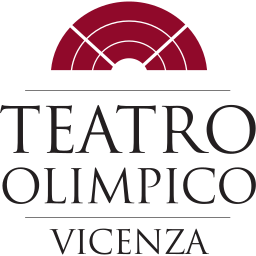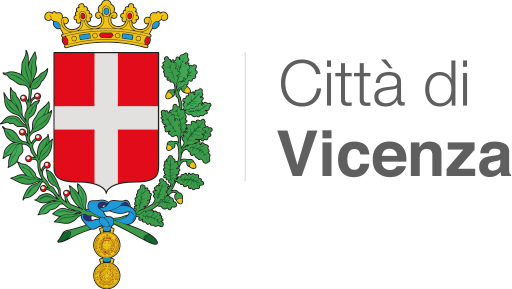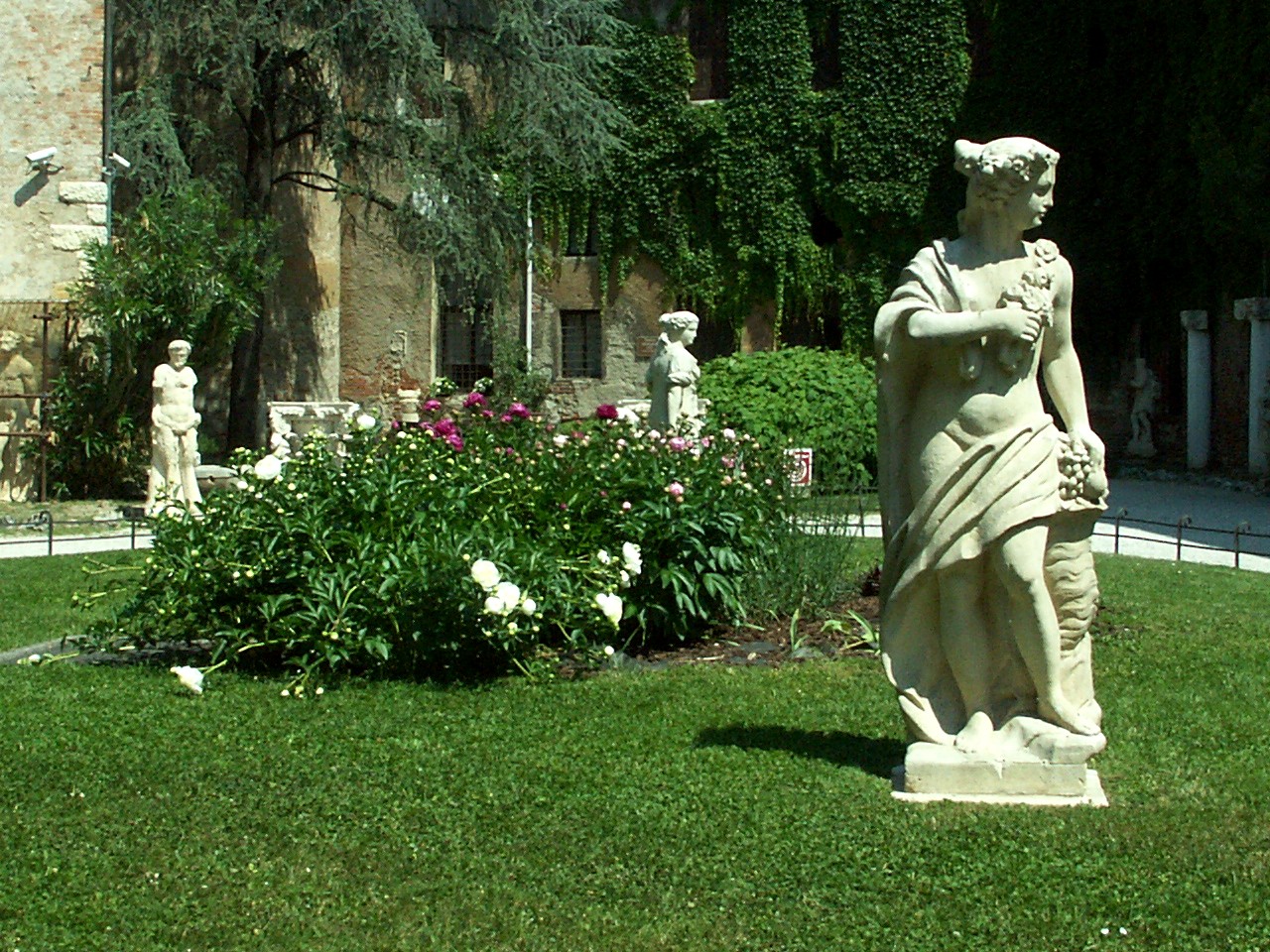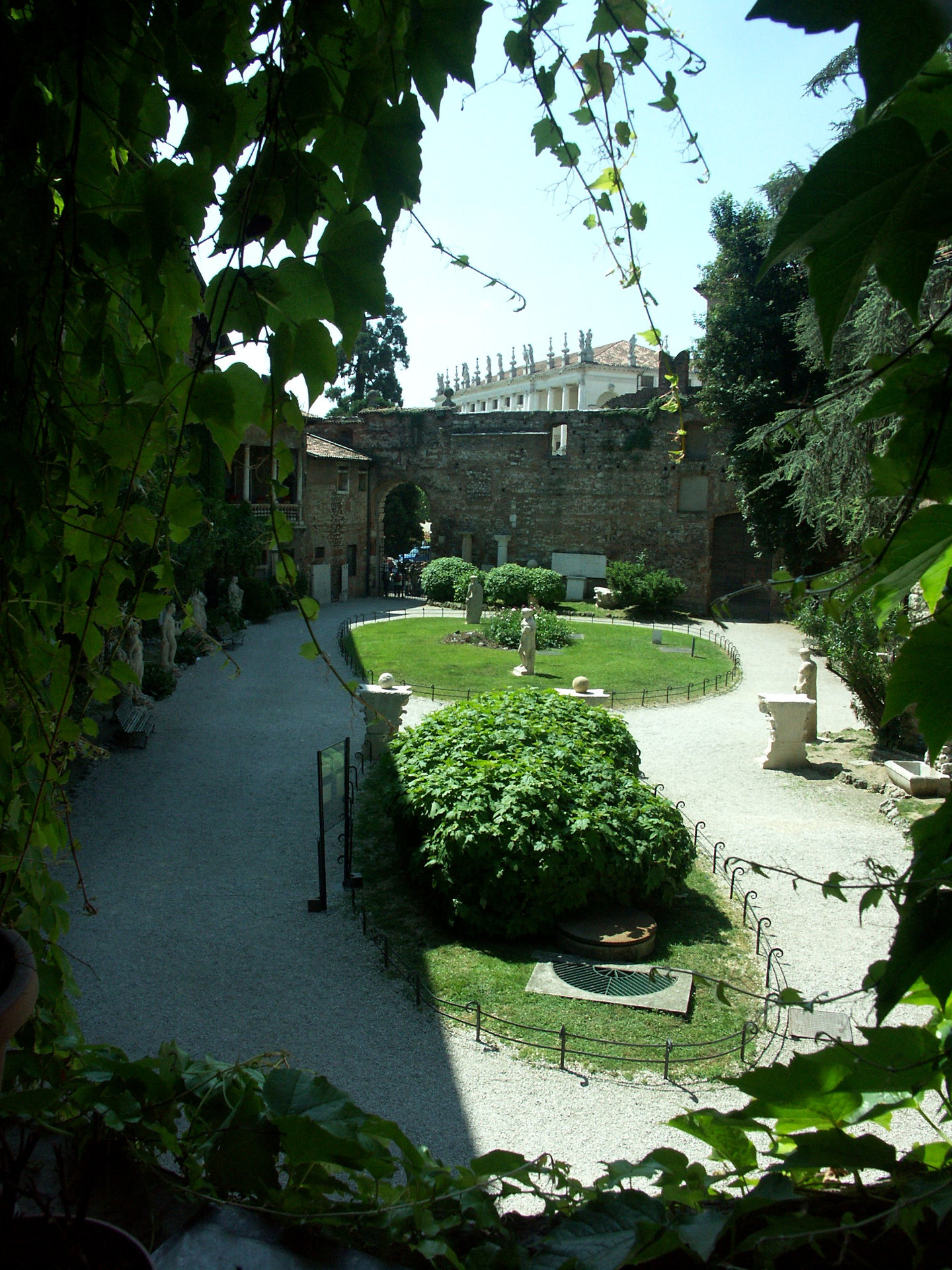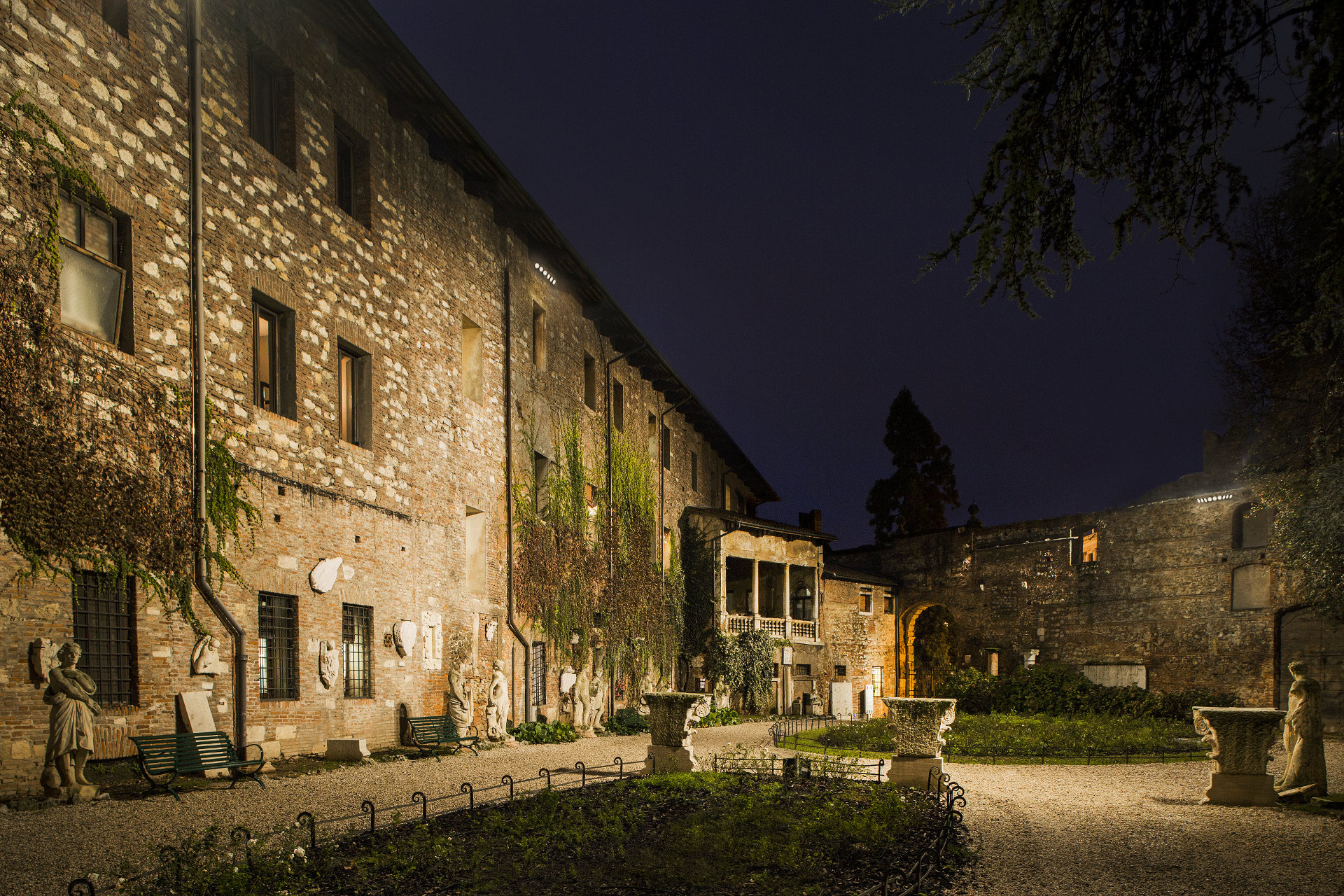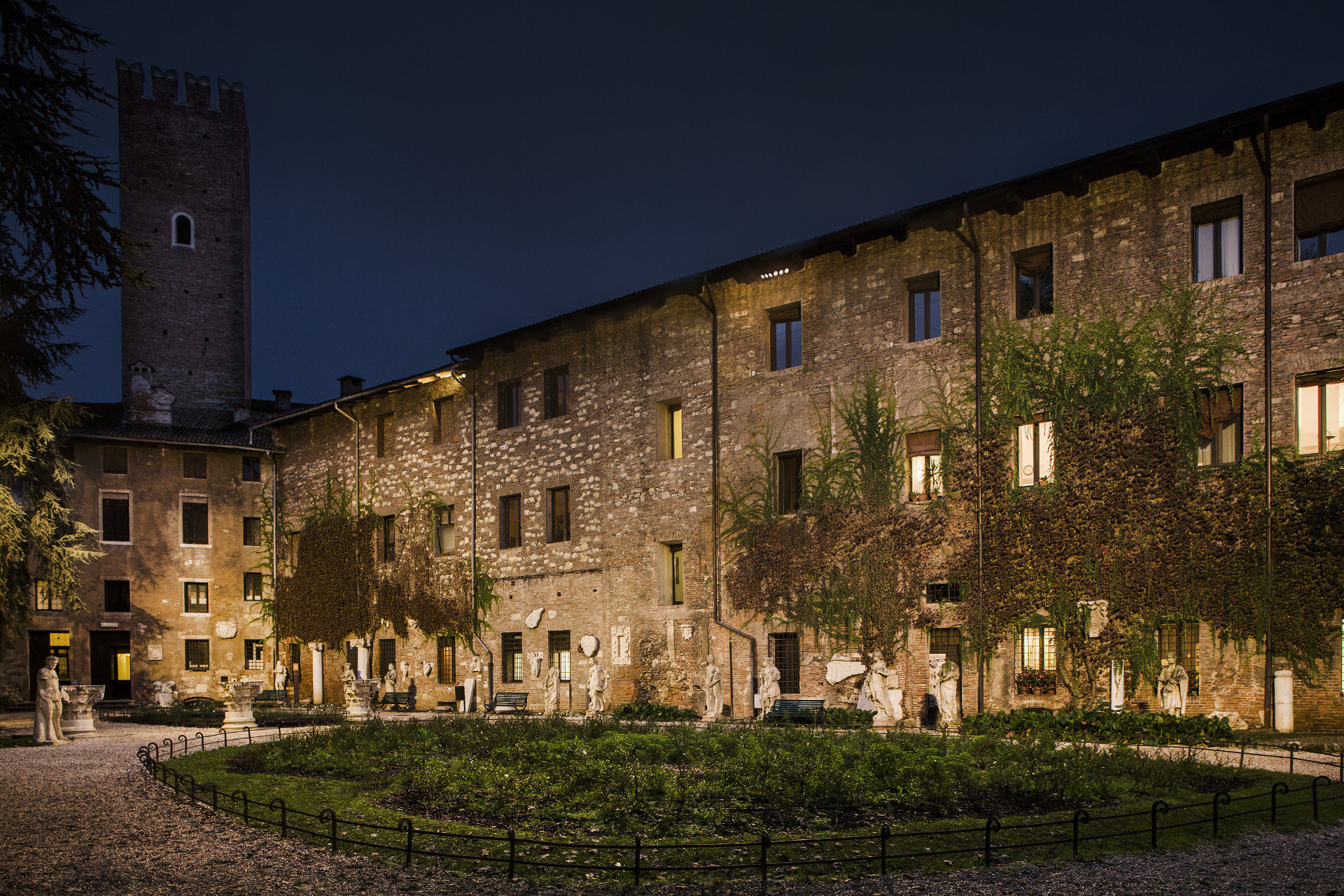The Garden of the Olympic Theater
The Garden of the Teatro Olimpico is accessed through the Armamentario or Arsenale Gate, opened in 1600 along the southern perimeter, in terracotta, of the ancient castle, which stood in the area of the city called “Isola” and was known in medieval and Renaissance times by the name of San Pietro, and later as del Territorio.
The Gate designed by Ottavio Revese Bruti is rusticated, with two slender ionic columns and a keystone that supports an attic decorated with coats-of-arms and trophies. On the left is the rigorous lombardesca gate in pink marble, opened in the fifteenth century and later walled in. A range of different stones and fragments are present on the massive wall.
The garden of the Teatro Olimpico is a small green area, filled with statues and ancient stone remains. It is a sort of open air archaeological museum, made more “romantic” by the inclusion of some plants and by its secluded and secret character, which increases its charm. It once was used as an austere military courtyard.
Of particular value is the Doric loggia of Palazzo del Territorio (visible on the right, as you enter). Once through the Gate, two large stones can be seen on the right. The first marks Vicenza’s UNESCO World Heritage Site status, the second recalls the decision of Emperor Francis I, in 1825, to reject all expenses made in his honour that weren’t destined for public works.
Moving to the left-hand side of the garden, and standing out among stone fragments of varying provenance, capitals and friezes of uncertain date and origin, is a 17th century stele and an epigraph dated 1866 recalling King Vittorio Emanuele’s visit to Vicenza (once located on the triumphal arch, also designed by Ottavio Revese Bruti, at the entrance to the Salvi Valmarana Garden). Continuing along the pathway, on the left is an interesting relief depicting Eretenos, god of the river Retrone that crosses the city, and which survived the collapse of the Eretenio Theatre. It reads: Nunc purior unda, meaning that with the erection of the Eretenio theatre, a temple of music and the arts, the river would flow more purely.
Again on the left along the pathway, against the external wall of the Theatre, are two sculptures, perhaps from the eighteenth century, one of a faun with goat’s hooves, the other a Cerberus with a dog’s head and human body.
Looking at the wall opposite, along what is now Palazzo del Territorio, you can see the statues of the Muses that once adorned the balustrade of Teatro Verdi in Campo Marzio, as well as different stone fragments including parts of the wings of the Lions of Saint Mark, noble coats-of-arms and a sort of rose window.
It is also worth noting the exterior of the Theatre, particularly the small apse on the left (with your back to the Gate by Ottavio Revese Bruti) which houses the view through the opening in the middle of the Theatre and was added to contain the scenery designed by Scamozzi.
Palazzo del Territorio is dominated by the Torre dell’Osservatorio, a watchtower, also known as Coxina or Arpolini or even Gomberti Tower, and later Reata Tower, visible in the 1580 Pianta Angelica plan of the city.
[Text loosely taken from: Alessandra Agosti, Guida Teatro Olimpico, Gilberto Padovan Editore, Vicenza 1991]
The Giardino dell’Olimpico is today used as an exclusive venue for concerts, theatre productions, weddings, banquets, gala dinners and press conferences.

